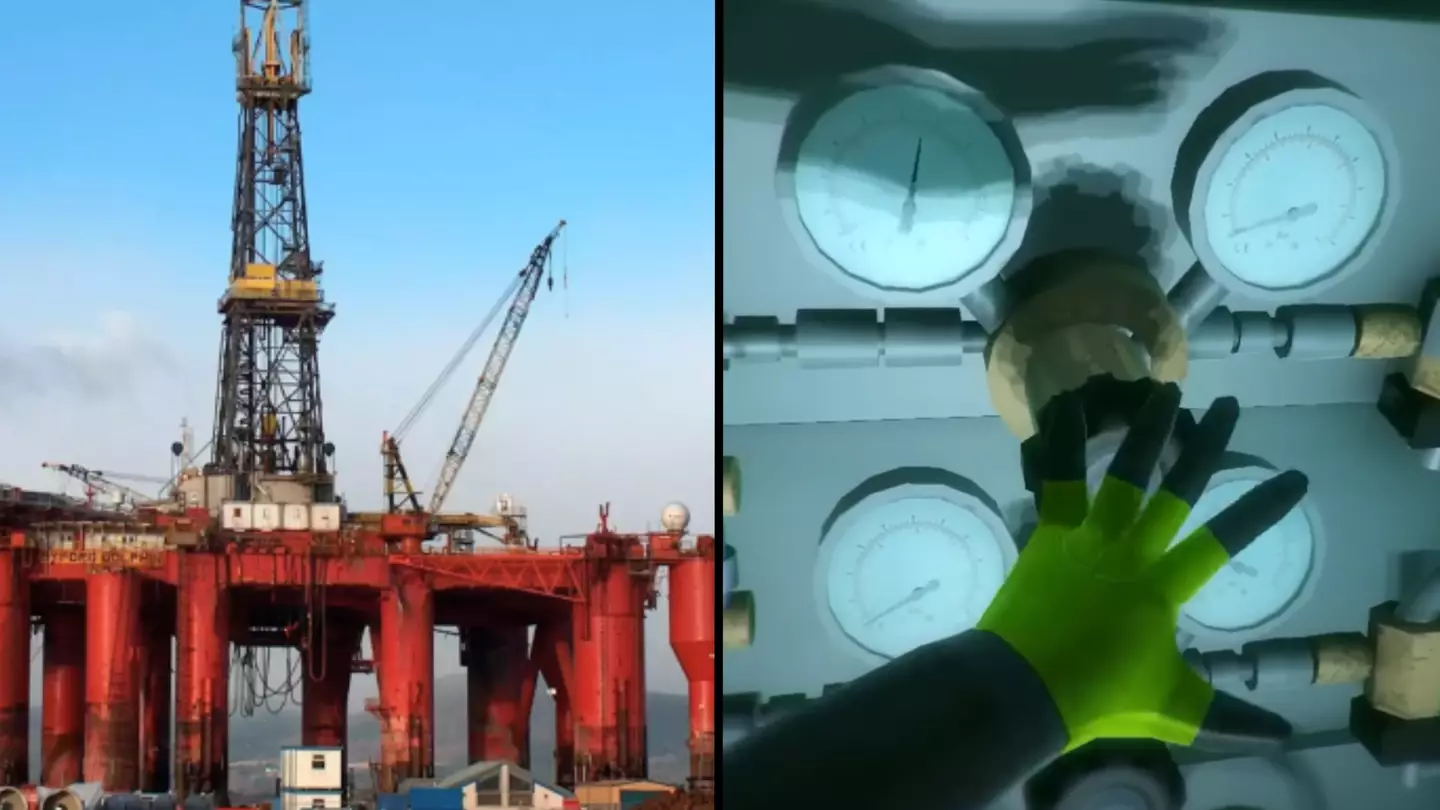
The tragedy claimed the lives of four divers and one crew member aboard the Byford Dolphin, a semi-submersible oil rig used in the North Sea on 5 November 1983.
Working as saturation divers at the time, the group were required to carry out construction work on oil rigs, around nine atmospheres/90 meters deep in the ocean.

The Byford Dolphin tragedy claimed the lives of five people on 5 November, 1983 (Wikimedia Commons/Josef Pavlik)
However, due to a mechanical failure that was later found to have been caused by faulty equipment, it all went terribly wrong.
The diving bell was released too soon, which caused a massive pressure drop from nine atmospheres to one.
The human body is not equipped to handle such a dramatic change in pressure, and the divers, who were inside the diving bell and transfer chamber, were exposed to this lethal pressure.
The rapid decompression violently expelled one diver from the bell, while others were killed almost instantly from the physical trauma caused by the pressure change.
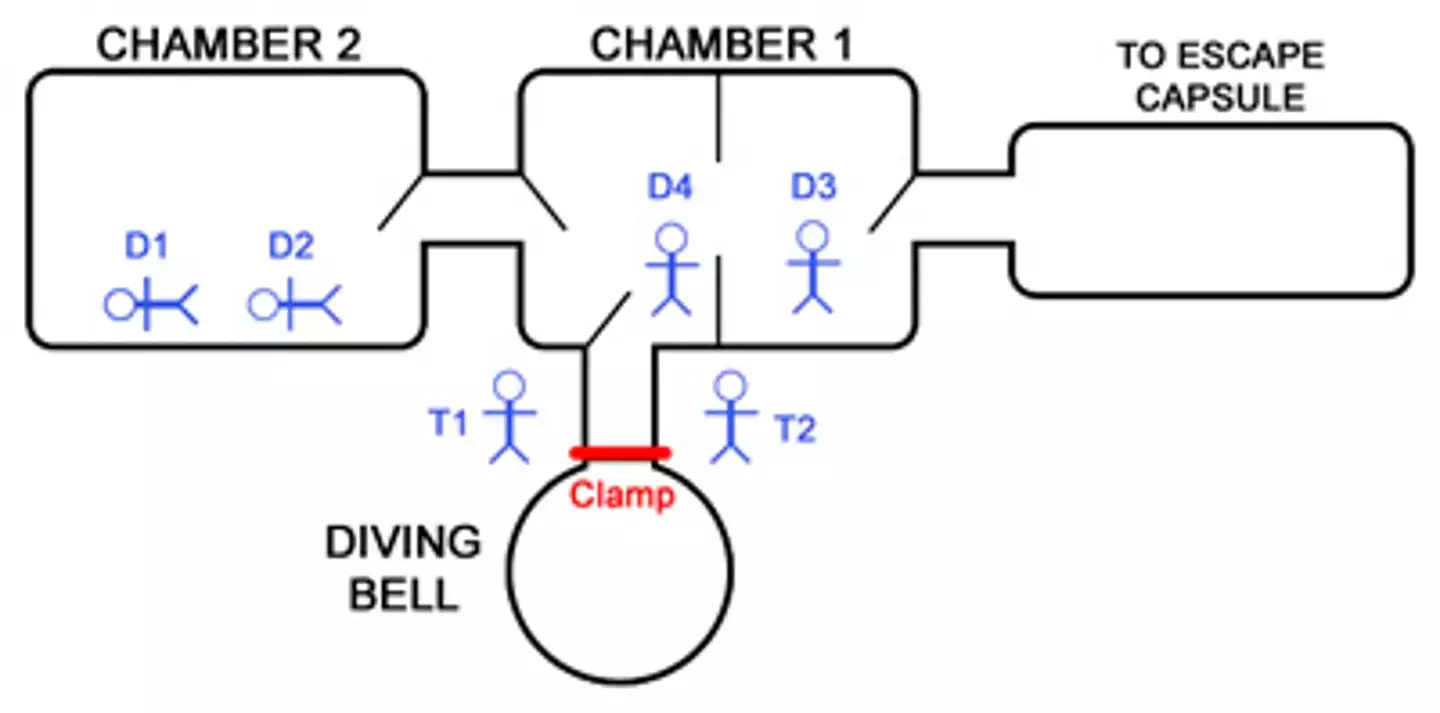
Here’s a horrifying simulation of what happened (Wikimedia Commons/YouTube/Storified)
British divers Roy Lucas and Edwin Arthur Coward and Norwegian divers Bjorn Giaver Bergersen and Truls Hellevik all died in the incident, along with British tender William Crammond.
YouTube channel Storified has provided a simulation of what happened on the day, and it’s truly terrifying.
Describing what happened, the video explains: “The diving bell disconnected before the chamber doors fully closed, releasing an explosive depressurisation.
“The air pressure inside the bell instantly shifted from nine atmospheres – the pressure experienced while 297 feet below the water – to one atmosphere, the average air pressure on the surface.
“The explosive rush of air out of the chamber sent the heavy diving bell flying. The diving bell struck Crammond and Saunders, critically wounding them.
“The fate of the four divers inside was far worse. Lucas, Coward and Bergersen’s blood ‘boiled’ instantly in their bodies as enormous amounts of dissolved nitrogen suddenly returned to their gaseous state. The divers died instantly.
“Hellevik suffered the worst death since he was closest to the connecting door. The pressure equalisation caused the door to chamber one to partially jam, causing Hellevik’s body to be forced through a small 24-inch crescent-shaped opening with a tremendous force of 25 tons.
“The sheer pressure resulted in the horrific outcome of his internal organs bursting through his body through the opening.”
In the years gone by, the Byford Dolphin disaster has been used as a reminder of the importance of safety standards in the offshore oil industry.
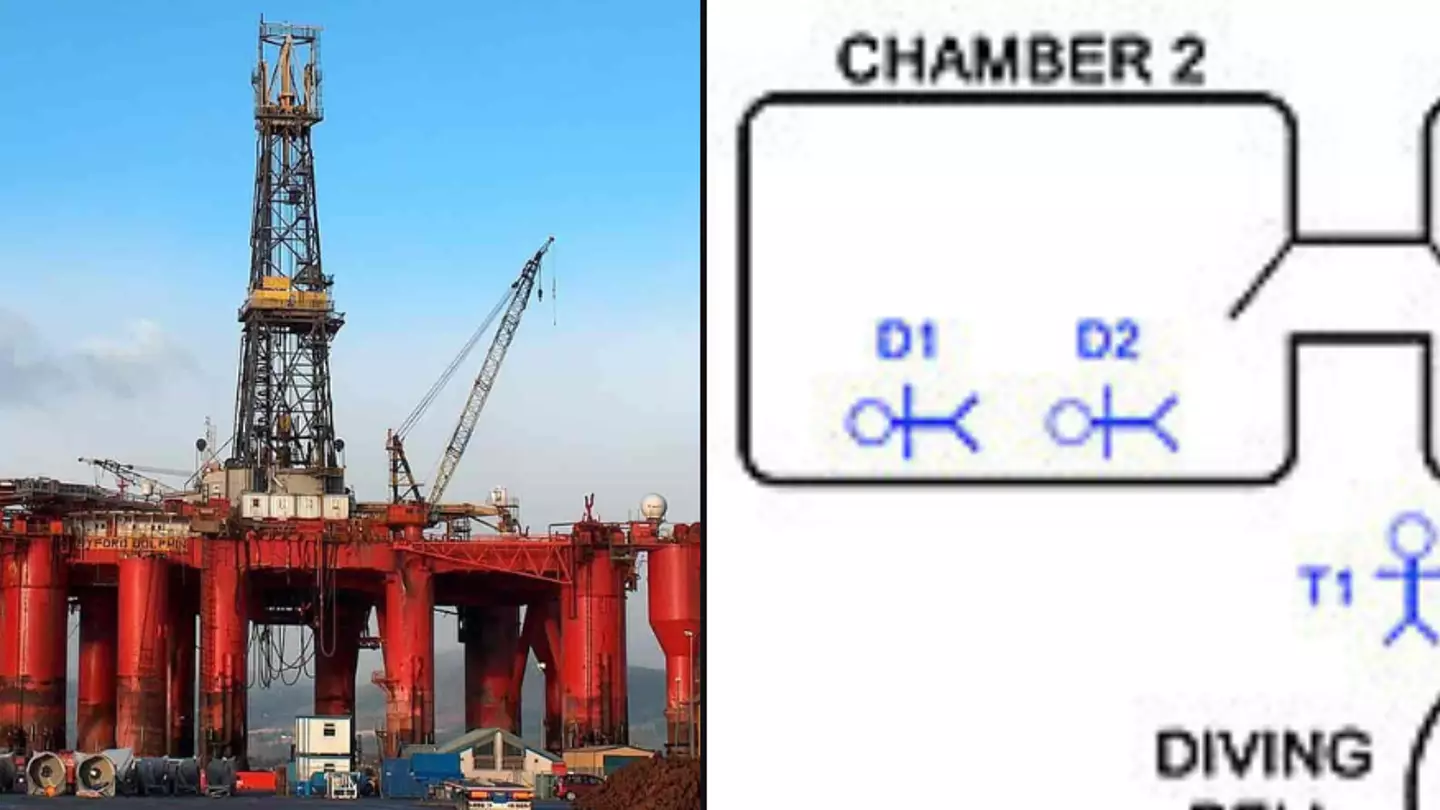
From bizarre torture methods such as scaphism to a Japanese man’s horrific death following an accident at a nuclear power plant, there really are some terrible ways to go.
But the Byford Dolphin Accident is enough to send shivers down your spine.
A group of people were working as ‘saturation divers’ near the Byford Dolphin oil rig in the North Sea, which involves divers working around 1,000 below the surface to carry out construction and maintenance work on structures such as oil rigs.
Due to working at such extreme depths, the divers need to breathe pressurised air that dissolves nitrogen in their blood.
Diving at depth creates hazards when resurfacing, as coming up too quickly can cause the nitrogen to form bubbles in the body, a condition commonly called ‘the bends’.
The group had been living in a pressurised facility during their time. This included living quarters and an area called ‘the diving bell’.
The diving bell was separate from the other units and sealed off.
The catalyst for the incident, saw the diving bell released too soon before the doors were fully closed.
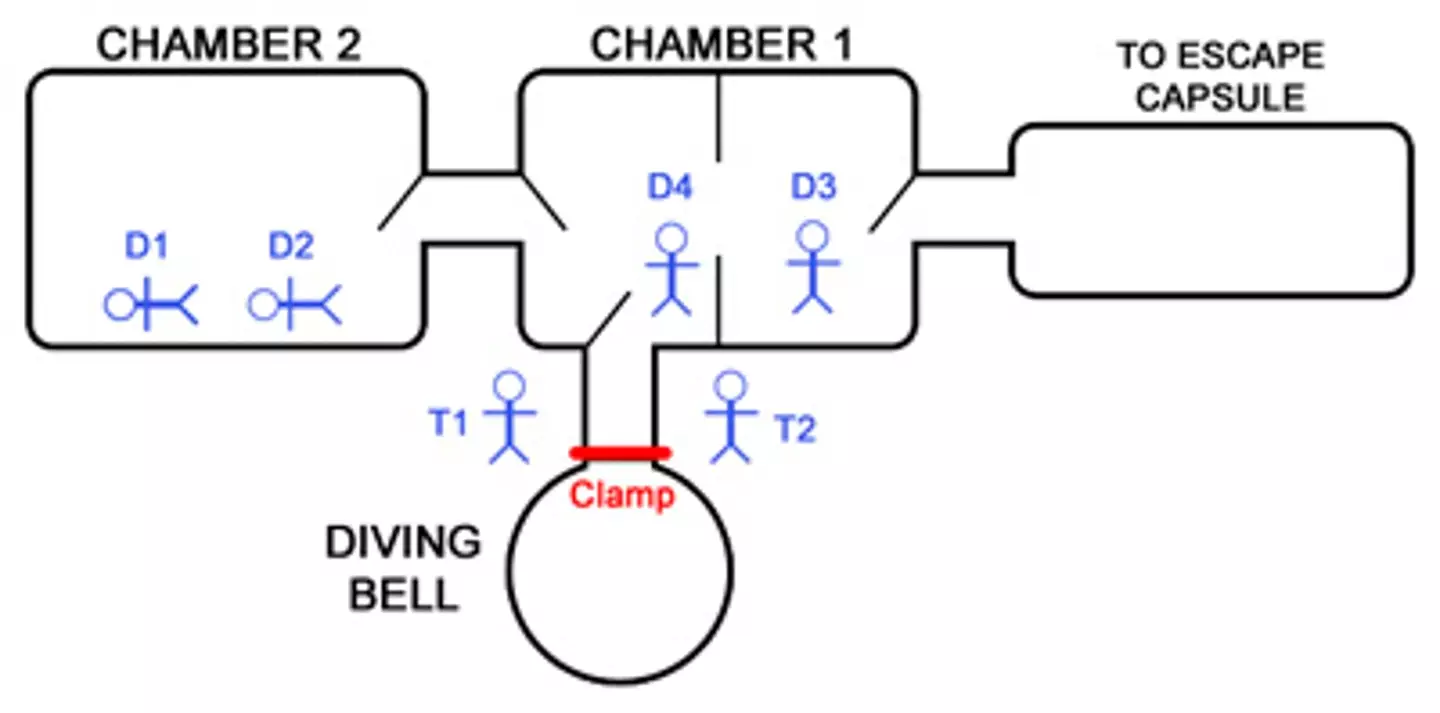
Wikimedia Commons
This meant that the area in which the crew lived went from nine atmospheres down to one – the normal surface air pressure – instantly.
It usually takes days for divers to safely resurface at the kind of depth the Byford Dolphin crew were working at.
William Crammond, a ‘tender’ who was assisting the divers, was hit by the dive bell as it flew away and killed.
Things were much worse for the four divers: Edwin Coward, Roy Lucas, Bjørn Bergersen, and Truls Hellevik.
The rapid depressurisation made the nitrogen in three of the divers’ blood turned into bubbles, effectively boiling them from the inside.
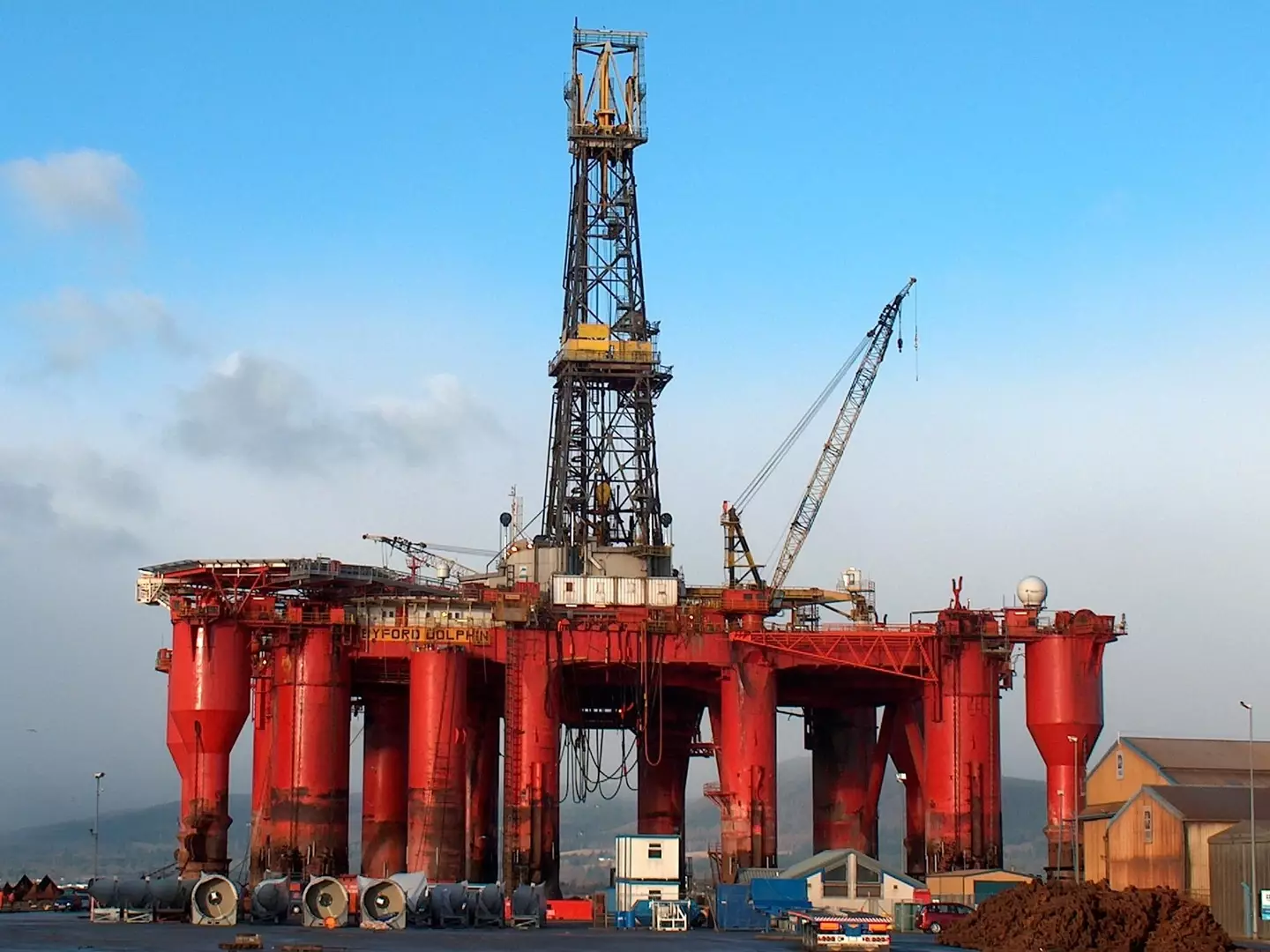
Wikimedia Commons/Josef Pavlik
But that’s not it. One of the divers somehow suffered even worse, as the pressure from the decompression forced his body through a 60cm hole.
This resulted in his body being ‘fragmented’, with the internal organs in his chest and abdomen being expelled by the pressure and strewn around the pod, with some parts of him being found ten metres away.
Martin Saunders, another tender, was the sole survivor but was left in critical condition following the horrific incident. His injuries required multiple surgeries and a lengthy rehabilitation.
The Byford Dolphin was the scene of another incident in 2002, when a 44-year-old Norwegian worker on the rig was struck on the head and killed in an industrial accident.
In 2016, the Byford Dolphin rig was put to rest.
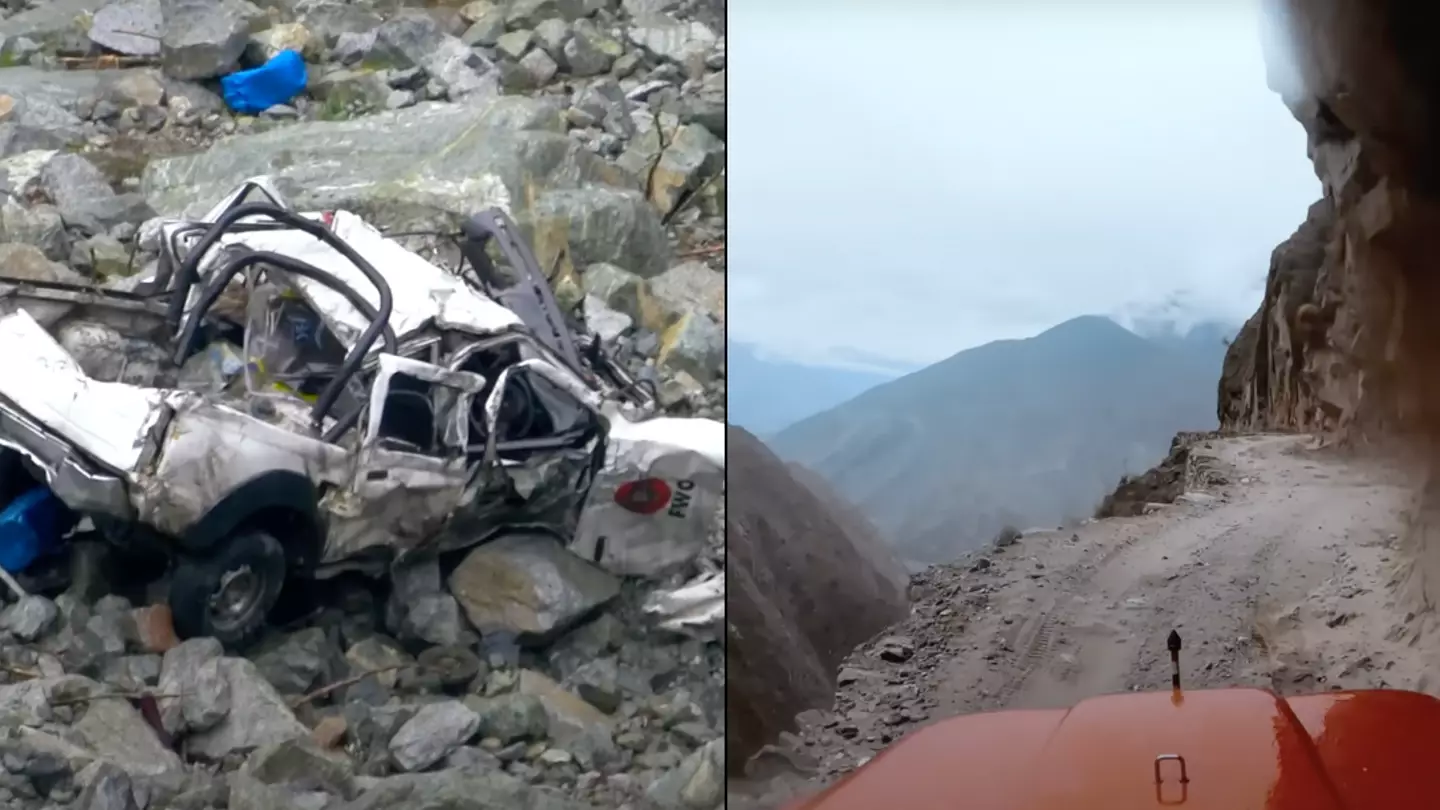
YouTuber Ruhi Cenet – who has visited hard-to-reach places in 65 countries – once travelled on the terrifying 810 mile-long stretch of the Karakoram Highway.
The highway connecting Pakistan and China earned the ‘death road’ moniker due to the aftermath of its 20-year constriction.
Work on the road began back in 1959 and ended in 1979, though this is when the most damage occurred.
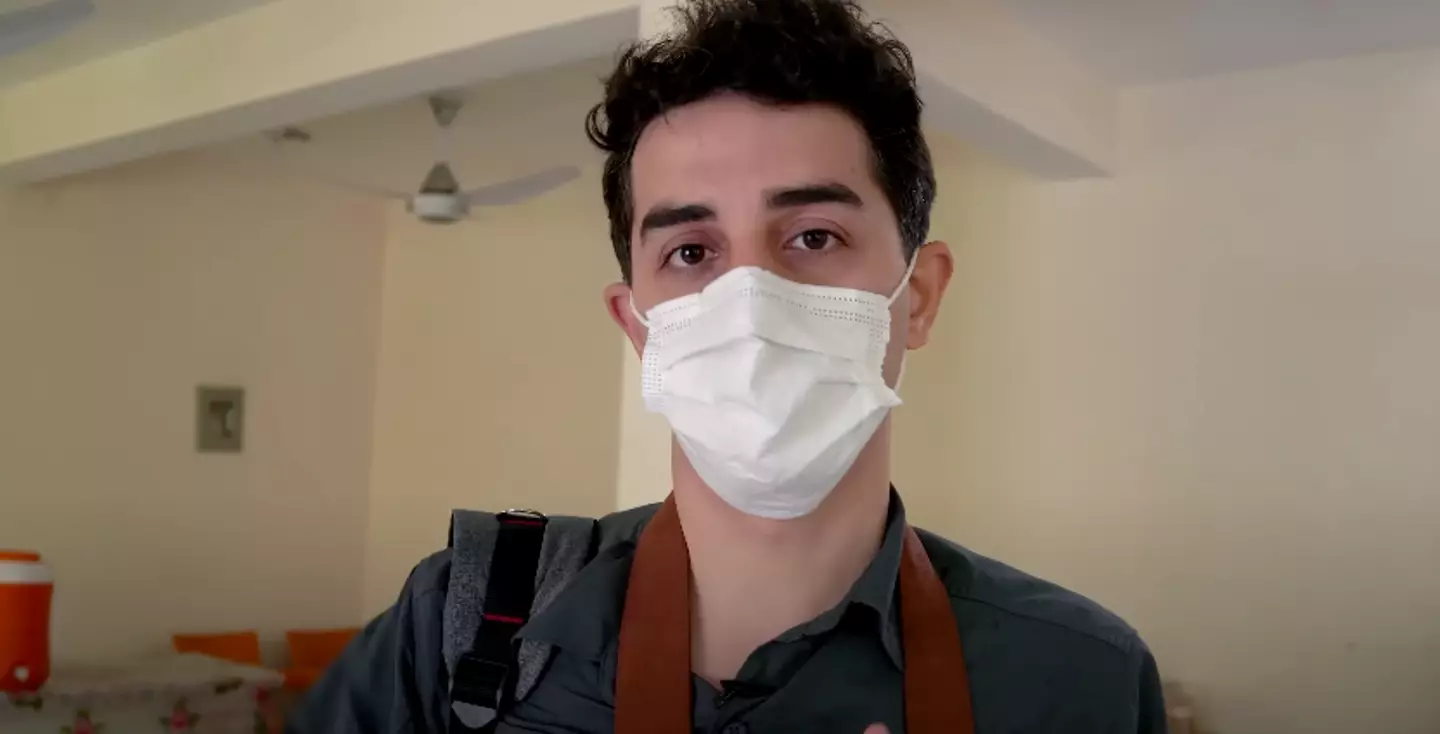
Documentary maker Ruhi Cenet did not know what to expect (YouTube/Ruhi Cenet)
Almost 1,000 workers, both Chinese and Pakistani, lost their lives due to harsh weather conditions and landslides.
To this day, its rocky formation and narrow road markings make it an incredibly dangerous trail to drive on.
Even the most experienced drivers can struggle through the winter months, with the addition of heavy snow and ice to the windy road and steep drops.
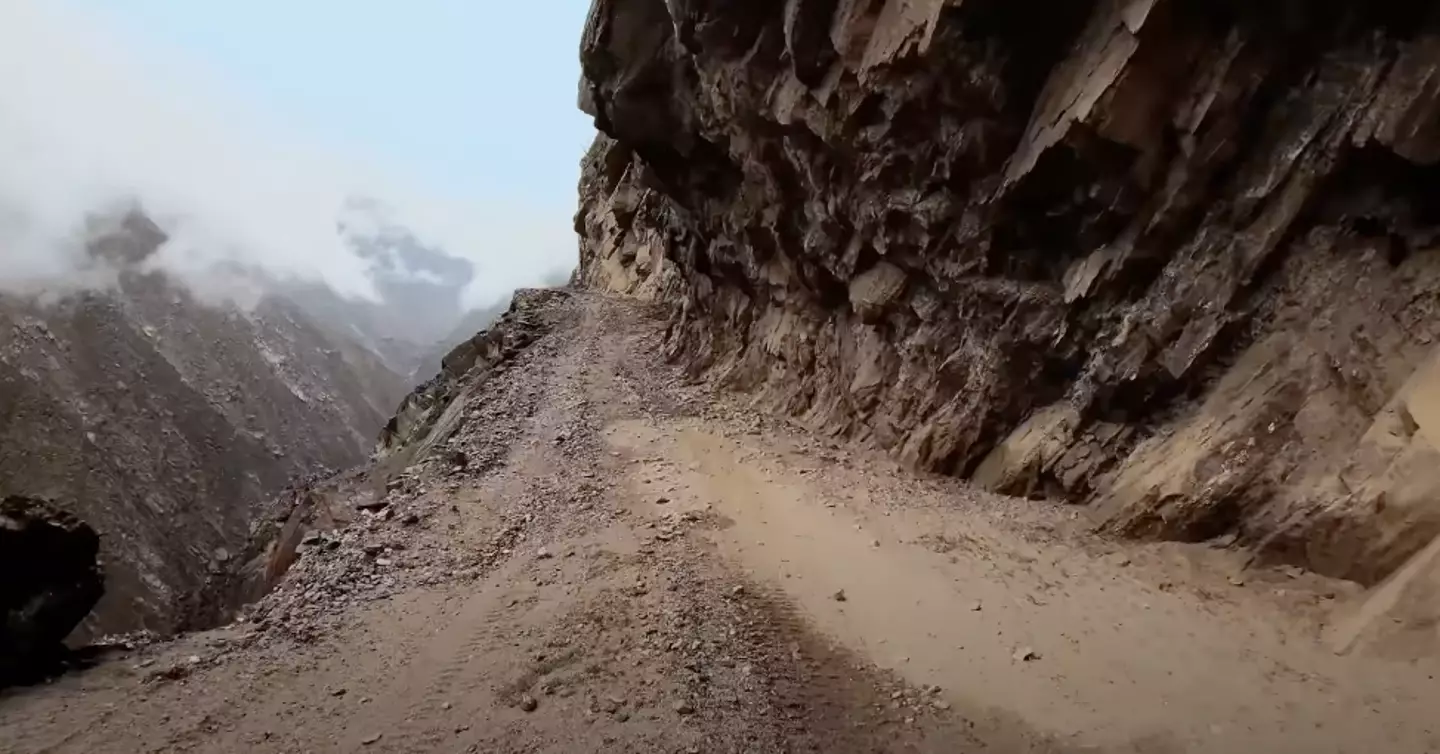
The road claimed the lives of almost 1,000 people in its construction (YouTube/Ruhi Cenet)
Despite the risks involved, documentary maker Ruhi was determined to give us some great content, and that he did.
“The three-hour-long 16.2km gravel path is such a road that sometimes memorials of the people that fell down and has lost their lives can be seen at the accident points,” he said back in 2021.
“We hope not to see one and keep our motivation alive.”
On the horrifying experience was, Ruhi added: “Look down guys, there isn’t any protection and the wind is starting to pick up.
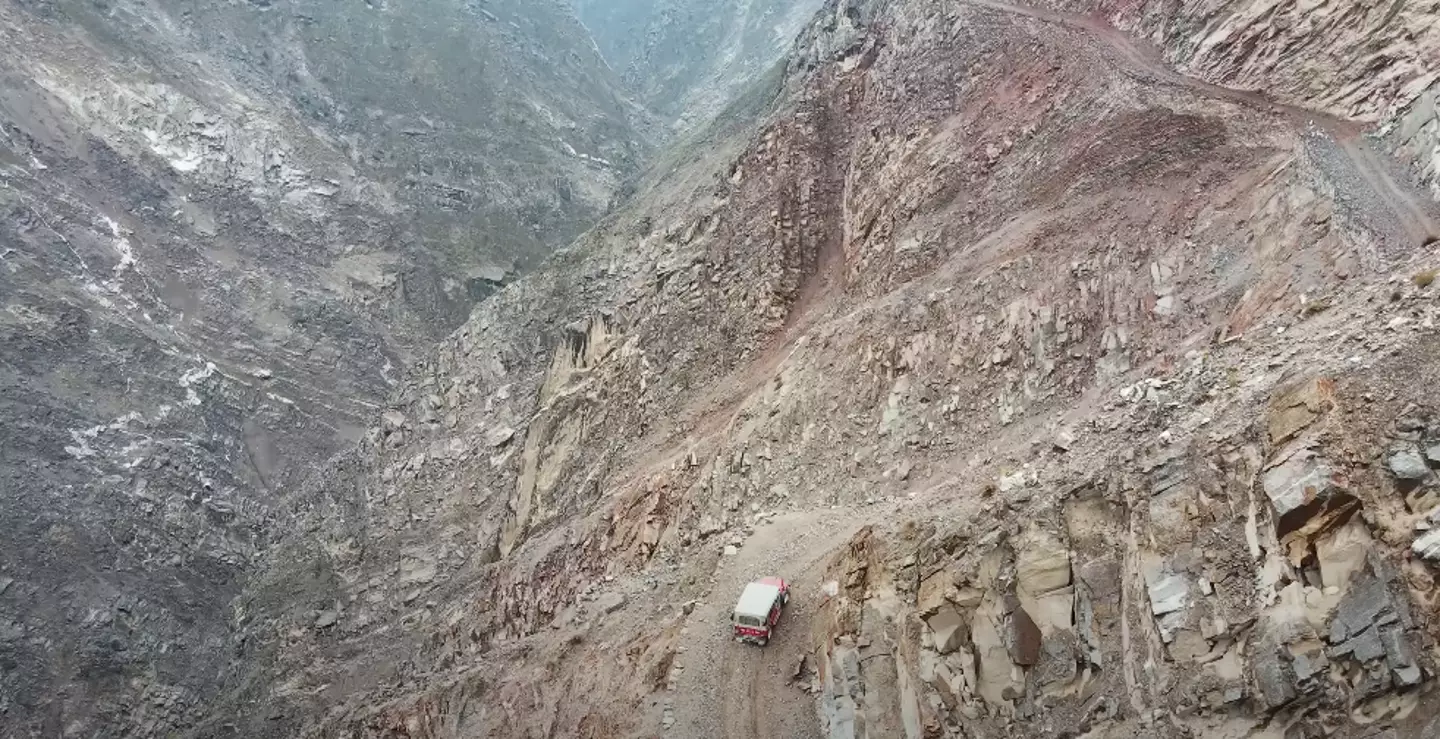
Truly terrifying (YouTube/Ruhi Cenet)
“There are no precautions to prevent a car falling down the cliffs and bursting into flames a landslide doesn’t only make a rock fall on our heads it also may cause us to fall down. The adrenaline levels are getting higher now.
“The world’s most dangerous road below us are cliffs. If the car falls it might blow up but we definitely lose our life.”
Viewers praised what was another one of Ruhi’s risk-taking adventures, with one person commenting: “After 15 years on YouTube, this is by far one of the coolest and most memorable ones I’ve seen. Well done.”
Another added: “Imagine if this guy has or gets kids, he’s never gonna run out of stories to tell them.”
While a third person hilariously revealed: “Bro I am at work, and I just lied to my boss saying I had stomach issues and that’s why i spend 25 minutes in the bathroom.
“While what I actually was doing, is watching this masterpiece of a short documentary!
“1000000 percent kudos to you and your team this is truly amazing, what a rollercoaster!!”
The four divers – Kazim Ali Jr, Yusuf Henry, Fyzal Kurban and Rishi Nagassar – died at work after being sucked into an oil pipeline on 25 February 2022, off the coast of Trinidad and Tobago.
Fifth diver Christopher Boodram was the only one to survive the freak accident.
The divers were called to work in a hyperbaric chamber (or pressurised chamber) with water being pumped out of it so they could change some nuts and fix a leak.
YouTube channel FatalBreakdown, who provide visual explanation videos of tragic incidents, has since showed what they believe to have happened on that fatal day in 2022.
The video provides animated visuals on how the five divers were working in hyperbaric chamber to fix a water leak.
The YouTuber explains: “The inflatable plug that they were removing was supposed to be separating 12 barrels of oil from the air and ocean water around it.
“In that case, it would have been a matter of routine to remove the plug and proceed with their work plan.
“The air pressure in the habitat would have been pressing down on a heavy column of oil.
“The oil would have been settled level between the two pipe openings at birth five and six. Nothing out of the ordinary.”
However, when they removed an inflated plug using a lever, it created a pressure differential.

A visual on how the four divers lost their lives. (YouTube/@fatal_breakdown)
This caused all five divers to get sucked into the 30-inch-diameter pipeline in Pointe-a-Pierre harbour.
Only Boodram survived the accident by swimming through oil water to a bend in the pipeline, eventually being pulled out by rescuers after being trapped in there for three hours.
The pipeline’s owner, the Paria Fuel Trading Company Limited, has since been accused of gross negligence and corporate manslaughter, according to a report by the Commission of Enquiry (CoE).
The report accused Paria of poor operating procedures and having no rescue team being sent out to the divers.

The five men were trapped inside the oil pipe, with only one being able to make an escape. (TTT News Loop News)
Paria’s terminal operations manager, Collin Piper, said the decision to not provide a rescue team was made to prevent more lives from being lost.
CoE said that the tragedy was caused by the ‘methodology adopted by both Paria and LMCS in removing the content from the pipeline,’ which created a ‘Latent Differential Pressure’ – a vacuum in the pipeline that sucked in the workers.
During his testimony, Boodram said: “Mind you all, in there was like an unbelievable nightmare. Your eyes are burning. Every time you try to open your eyes, it burns.”
Litigation over the incident is still ongoing.
LADbible has contacted the Paria Fuel Trading Company Limited for a comment.
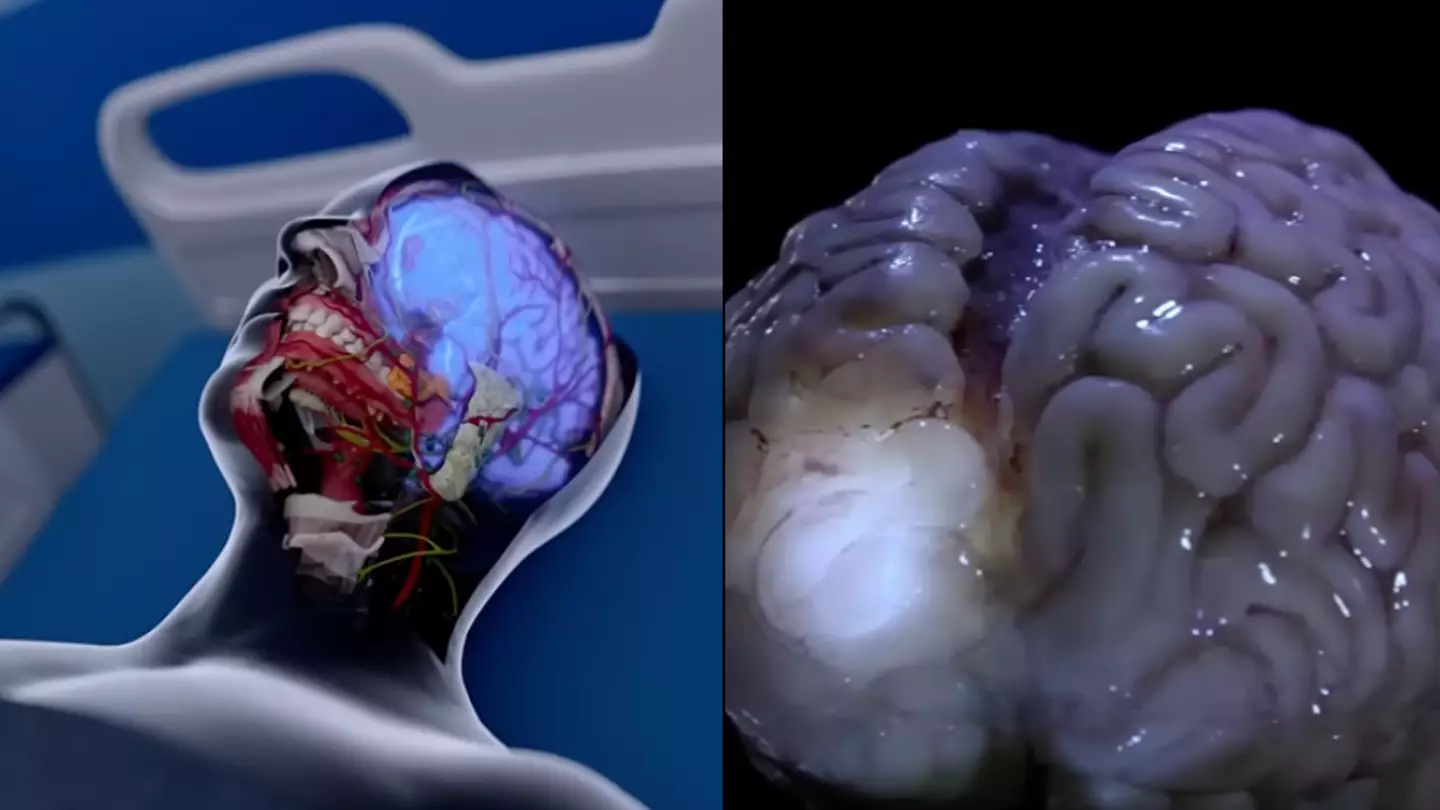
People have been left stunned after watching a jaw-dropping simulation of what happens to our brains within 10 minutes of dying.
While the idea of death can be frightening for some, others are simply fascinated by the scientific process.
Of course, death can be categorised by the body failing to survive, breath ceasing and vital organs being shut down for good.
But did you know some reputable studies claim brain activity can continue for up to several minutes after death?

Researchers believe you could be conscious for up to 20 seconds after death (Getty Stock Image)
Research undertaken by New York’s Stony Brook University of Medicine discovered that our brains come to a standstill so ‘slowly’ that it could take ‘hours’ for them to come to a complete standstill.
Elsewhere, Dr Sam Parnia – the director of critical care and resuscitation research at NYU Langone School of Medicine in New York City – and his team found that bursts of brain activity took place in four people after their hearts stopped.
Speaking about the study, published in the Proceedings of the National Academy of Sciences, Parnia told Live Science that even after our breathing and heartbeat stop, we remain conscious for around two to 20 seconds.
It’s understood that’s how long the cerebral cortex can survive without oxygen.
During this period, people are likely to ‘lose all your brain stem reflexes’, including the gag and pupil reflex.
Once the ‘thinking’ part of the brain flatlines after 20 seconds, no brainwaves will be visible on the electric monitor.
.jpg)
A simulation has outlined what happens to the brain in the moments after death (YouTube/hashemalghailiofficialchannel)
This will eventually result in the death of brain cells hours after the heart has stopped.
Parnia added that the study suggested they were ‘identifying a marker of lucid consciousness’.
If the idea of brain activity continuing after you’ve died is difficult to wrap your head around, then one content creator has made it easy to visualise the process.
The YouTube user, known as @hashemalghailiofficialchannel, has uploaded a viral video explaining how ‘your brain still works after death’.
“After you die your brain continues to work for more 10 minutes,” the video begins.
“Despite having a functionally dead heart, your brain will continue to work,” it continues, before claiming your noggin could be the last part of your body to die.
As previous studies suggest, the video says that in the moments before death, the brain will receive a surge of electricity.
This surge is thought to allow you to keep consciousness for up to 20 seconds.
“This is because the cerebral cortex can last without oxygen,” they continued. “This part of the brain is responsible for thinking and decision making.”
After watching the video, YouTube users have come out in their droves to have their say about the idea of consciousness after you die.
“This brings me joy, it means my dad heard me when I told him I loved him,” typed one user, as another said: “That’s probably the life flashing before your eyes thing.”
A third remarked: “New fear unlocked: Being fully conscious in a dead immovable body unable to do anything but to be stuck with your thoughts.”
“This is why having loved ones around is so important,” said someone else.


